Ever wondered why there are a dozen cookies per guest at a Pittsburgh wedding?
At a Pittsburgh wedding, the cookie table is as important as the first kiss, but finding the true origin of the tradition is as challenging as making the perfect pizzelle.
Some say it’s a custom brought to Pittsburgh by immigrants (and everybody from Italians to Polish people claim its heritage). Others say it grew out of a Depression-era need to save money on cake. And yet, there’s very little published documentation of cookie tables at weddings until quite recently in the 1990s.
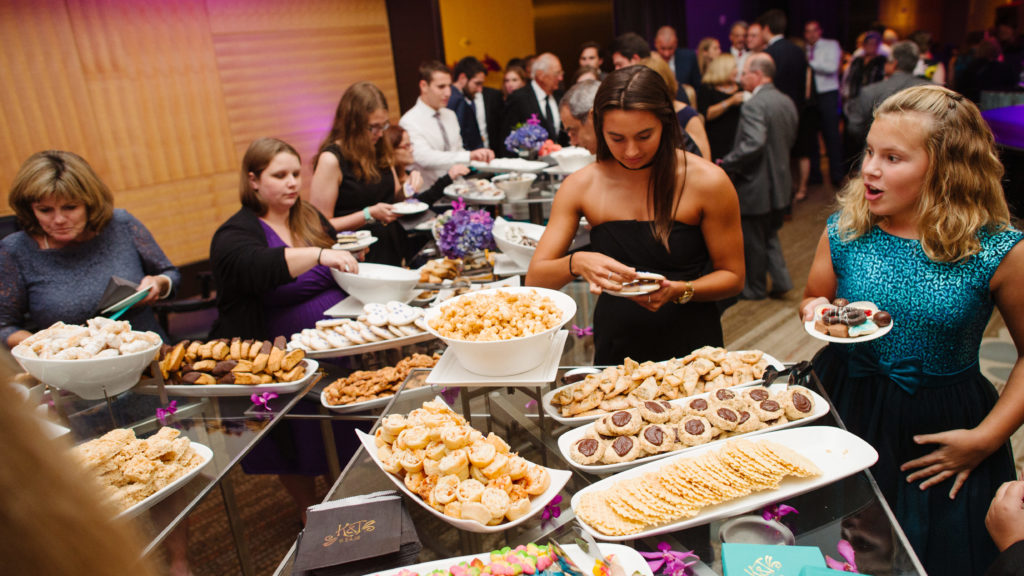
COURTESY OF MICHAELWILL PHOTOGRAPHY
But no matter the roots, this enduring tradition of sharing dozens upon dozens of sweet homemade confections at weddings is baked into Pittsburgh culture — and it continues to perplex newcomers to the city.
So how did it get started?
The answer is “murky,” according to Lauren Uhl, Heinz History Center’s curator of food & fitness. But one thing is clear, she said: With the exception of Youngstown, Ohio, it seems to be a uniquely Pittsburgh tradition.
Dating back into the 1900s, the concept of a cookie table was a fixture at church socials, PTA meetings, and card games but not necessarily at weddings, Uhl said.
The cookie table’s association with weddings didn’t start popping up in publications until the 1990s, she said. But perhaps the concept didn’t show up in newspapers and cookbooks, she added, because everybody was doing it, so it wasn’t seen as newsworthy.

COURTESY OF MICHAELWILL PHOTOGRAPHY
Certainly Pittsburghers feasted on wedding cookie tables well before the ’90s, with local bakers saying they recall cookie tables at their family’s weddings for as long as they can remember.
“Growing up in Penn Hills, the big talk was — even more than, ‘how was the wedding?’ — it was, ‘how were the cookies?’” Marc Serrao, owner at Oakmont Bakery, said. “They’d start baking a month before the wedding. We’d have cookies in our closet and in our freezers.”
For many local families, preparing a cookie table has become a cherished experience, when family recipes are shared and each cookie is truly made with love.
“Whether you’re showing your prowess at making cookies or this is your love to somebody because this takes a long time and it’s something to be proud of, you want to bring your best and your finest to the table,” Uhl said.
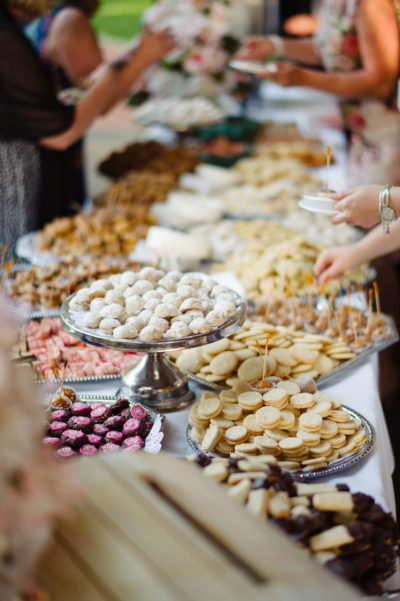
COURTESY OF MICHAELWILL PHOTOGRAPHY
Indeed, many cookies spotted on a Pittsburgh cookie table — ladylocks, kolaczki, pizzelles, pesche con crema, peanut butter blossoms, nut rolls, the list goes on — demand time and painstaking attention to detail.
Generally, family members prepare the cookies, though couples often order from professional kitchens, like Moio’s Italian Pastry Shop, Bethel Bakery, and Oakmont Bakery, who rely on their own family recipes, to add a supplement.
For Katlyn Doolin, manager of the wedding department at Bethel Bakery in Bethel Park, the Pittsburgh cookie table tradition has been a must for years in her Irish and Slovak family, with family members diligently preparing cookies and spending weeks mapping out the cookie menu.
“What I love about the story of the cookie table is this that there is not a singular story. Just like the best traditions in life, everyone has its own unique spin on it,” Doolin said.
She’s most familiar with the origin story surrounding frugality during the Depression.
“The cookie table has sprung from our roots, meaning we’ve had a lot of immigrants come into Pittsburgh during the turn of the century and especially around the Great Depression,” she said. “It became also a cost savings tool for the couple, so they weren’t shouldering the cost of dessert or cake because money was so tight.”
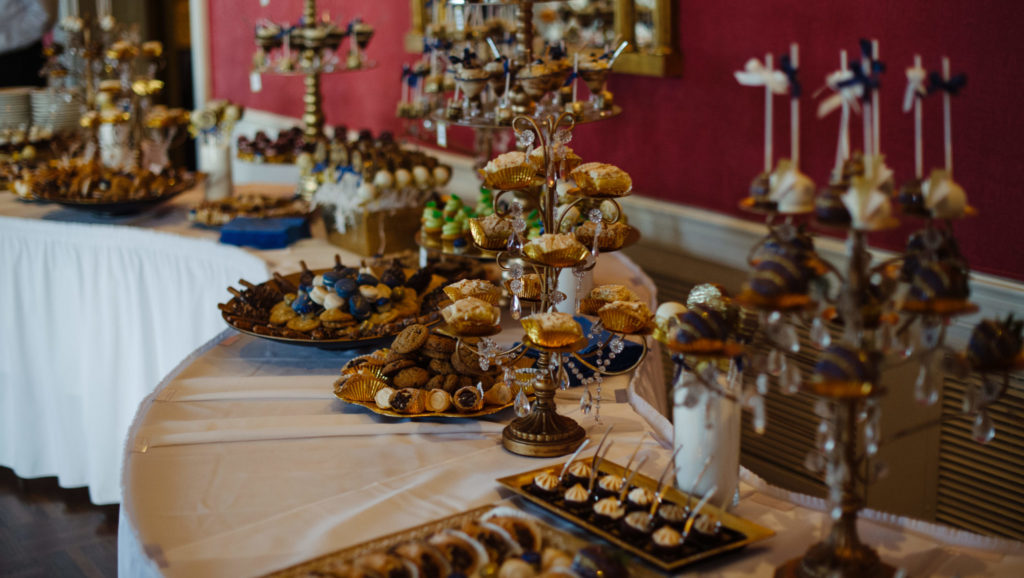
COURTESY OF MICHAELWILL PHOTOGRAPHY
Serrao, who is Italian, always believed the tradition had Italian roots, and it fits in well with Pittsburghers’ kind hearts.
“I know Slovak women, Polish women, Eastern Europeans, Greeks come in and say it’s their thing,” he said. “A Greek family said, ‘We have to have a cookie table. It’s our culture.’ And I’m thinking, ‘It’s everybody’s culture.’ But I think more than culture, it’s about hospitality and generosity.”
Though he’s noticed the tradition since the ’70s, Tony Moio, who owns Moio’s Italian Pastry Shop in Monroeville, has seen a change over the years.
“When I first came in with my Dad and my Grandfather, if they did do cookies at a wedding, it was one to two per person, and then over the years it started to go up,” Moio said. “Ten to 15 years ago, it exploded, and it became a thing that you had to have a cookie table.”
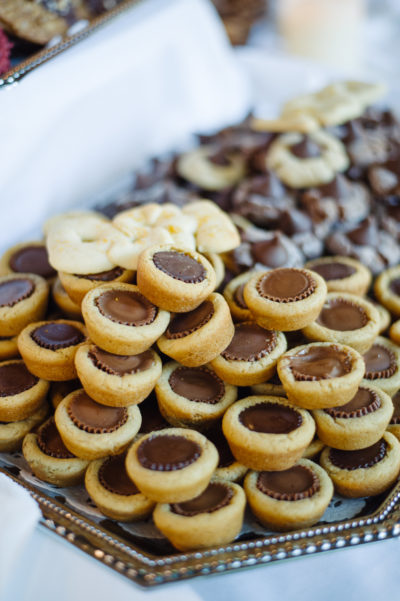
COURTESY OF MICHAELWILL PHOTOGRAPHY
There’s no exact number for amount of cookies at a wedding. The bakers agree it’s somewhere between six per guest up to one-and-a-half dozen per guest.
But some exceed even that generous amount, covering multiple tables with trays of sweet delicacies. Moio even remembers a wedding at the now-closed Monzo hotel in Monroeville with 5,000 cookies.
Yes, that’s about 416 dozen.
He’s shipped cookies to Pittsburgh expats from California to Texas to Florida for their weddings.
So used to the tradition, Moio assumed it was more widespread that Pittsburgh, thinking it was an East coast custom. That is, until he met a Pittsburgh bride marrying a New Jersey groom, and the topic of a cookie table inevitably came up.
“The New Jersey couple was like, ‘What the hell is this?’” he said.
Cookie Table Etiquette
If you’re attending your first Pittsburgh wedding, you’ll probably have a lot of cookie table etiquette questions you’re too embarrassed to ask, so we asked them for you.
Most importantly, when can I eat cookies?
This is a bit controversial, and the answer likely lies in family tradition.
Some families open the cookie table during happy hour, while others wait until after dinner.
Generally, the bakers recommend waiting until after dinner.
“Universal etiquette is that you’re not supposed to touch those cookies until after dinner. However, what is etiquette and what happens are two totally different things,” Doolin said. “I dare someone to tell Grandma that she is not allowed to sneak a cookie off the cookie table before dinner. And I also dare someone to tell Aunt Betsy that she is not allowed to put four cookies in her purse for the next morning with her coffee.”
Serrao gives the green light to eat cookies both before and after dinner. In his family, they’ll serve a few cookies before dinner and save the more elaborate cookies, such as mini cannoli and mini cheesecakes for after dinner.
“Before the wedding [reception], we’ll give them a little bit to tide them over until dinner,” he said.
Should I eat both cake and cookies?
A resounding yes, the bakers agree.
If I’m making a cookie table, how many cookies do I need per person?
It varies.
On the most conservative side, plan for four to five cookies per person. On the more generous side, up to a dozen-and-a-half.
“We’ve had big Italian and Polish weddings, where we’re looking at a dozen or a dozen-and-a-half cookies, and that’s not even batting an eyelash. I’ve followed up with them, and there was not a single cookie left,” Doolin said. “If there’s a lot of folks from out of town, you have to teach them to use that cookie table. They might be too polite. You have to dig in.”
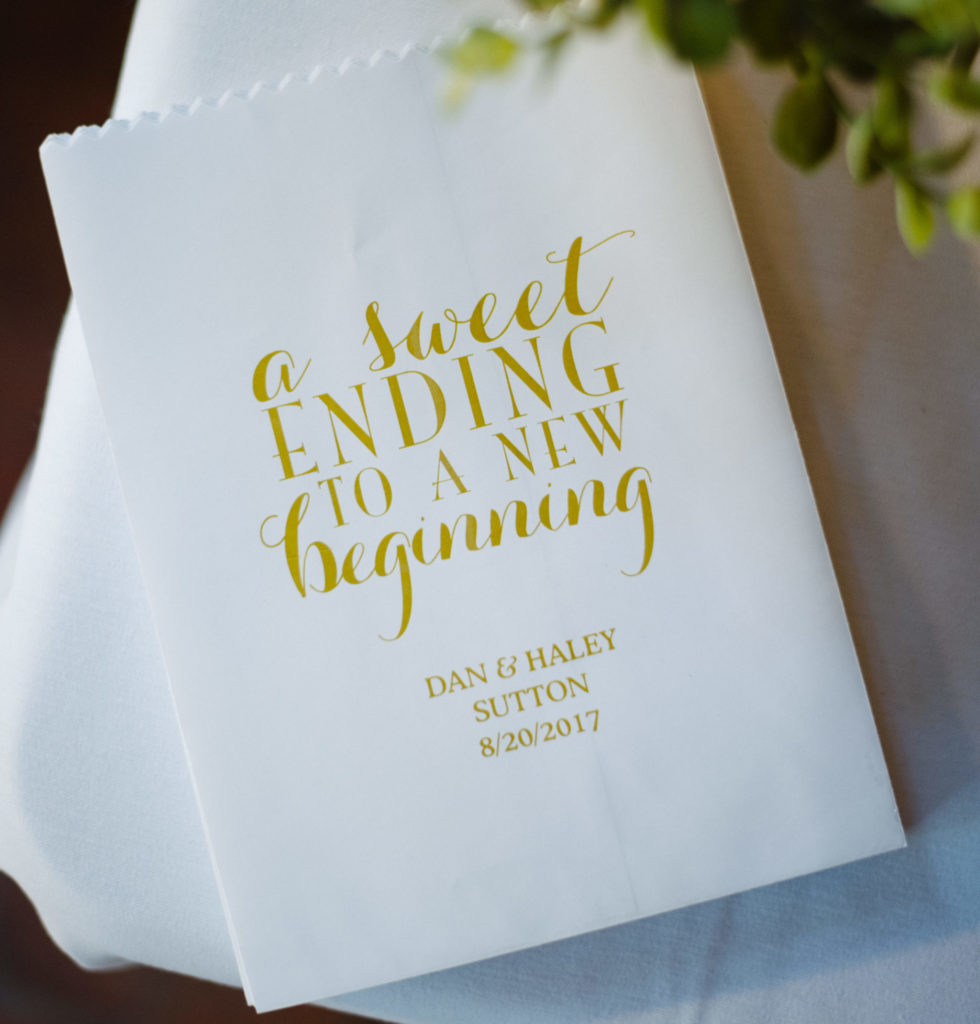
COURTESY OF MICHAELWILL PHOTOGRAPHY
What else do I need to make a cookie table?
To-go boxes or bags. This is key.
Some families even attach family recipes as a memento.
“You got to have the boxes or bags for people take them home,” Moio said, “or there will be a torch parade coming to get you.”
After meeting each garden caretaker, taking notes, and snapping pictures, Charlie made a thoughtful design depicting each place of refuge. His illustrations capture places where neighbors could still gather, find peace, and nourish themselves during a profoundly stressful time.
About 10 years ago, Cat Luck hopped in her Volvo wagon to sell her jewelry up and down the West and East Coasts. The Salt Lake City native eventually made her way over to Pittsburgh, the place she’s since called home for the last six years. Cat creates her two jewelry lines under Collarbone Jewelry at her studio in South Side’s Brew House and sells her creations throughout the ‘Burgh and beyond.
Ready to find a good deal? Grab your cart, bring some cash, and get ready to scavenge for treasures because it’s National Thrift Shop Day! In a time where the fashion industry contributes to 1/10 of the world’s carbon emissions (a number greater than all international flights and maritime shipping combined), we wanted to celebrate some local people and shops that help us live affordably, be good to the planet, find our unique style, and make Pittsburgh a better place.
As a continuation of last week's story on the historic Pittsburgh gem, Klavon's Ice Cream Parlor, we had the chance to talk with local icon and WQED Producer Rick Sebak about his very favorite local ice cream spots around the city.